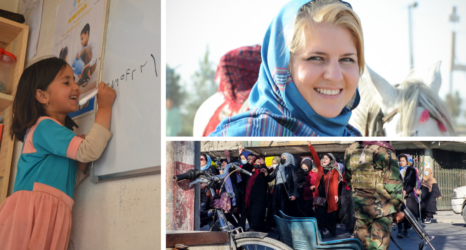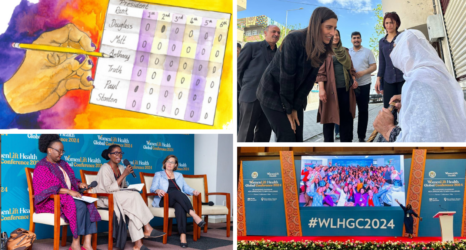Fire makes her scared. Hunger keeps her going. Musamat Nasrin Akhtar Tisha arrived in Dhaka to follow “the garment dream,” as she calls it.
“I came to Dhaka to work in the garment factories. There is little work for girls in the villages. There is more money in the city,” said the 17-year-old with bright eyes, who wanted to study and work at some “office.”
Like Tisha, thousands of women migrate from Bangladesh’s villages to Dhaka to join the 3.6 million work force involved in the country’s $19 billion ready-made garment industry, the second largest in the world.
But the factories that house their dreams have now become death traps for many. Most recently, on Jan. 26, seven female workers were killed when a fire burned down the two-story Smart Export Garment Ltd. in the capital, according to a report by the Institute for Global Labour and Human Rights. The workers were trying to flee when they were crushed to death.
Apparel companies do not publicly disclose the fire hazards in their suppliers’ companies, endangering lives of workers, according to the report Deadly Secrets by the Washington-based International Labor Rights Forum.
Tisha, who has moved from factory to factory, works seven days a week, eight to 12 hours a day for $31 a month, after doing night shifts and overtime. After violent protests in 2010, the minimum wage was increased to $37 a month, from $20, but not all companies comply.
Tisha pays $23 for food and lodging and lives as a paying guest with a six-member family in a one-room house. At night she rolls a thin-mattress and sleeps on the floor with the younger children. The others sleep on a wooden bed.
She is working hard so one day she can save enough money to return to the village. But Tisha said she cannot resist buying street food and trinkets. “I can’t save anything. I try hard but everything gets finished.”
The label “Made in Bangladesh” started popping up in 1978, with a shipment of 10,000 pieces of men’s shirt, according to Bangladesh Garment Manufacturers and Exporters Association. Now Bangladesh is being called the “new China”—the next hotspot for ready-made garments.
“The workers are supposed to work for eight hours a day but it is always more,” says Raqib M Ehsan, a quality control manager for various garment factories. “Almost all factories employ children… [The] male managers are involved in sexual abuse. It can be said that there are only a few factories in Bangladesh where this does not happen.”
He adds that often female workers become victims of assaults and eve teasing, a term used to refer to public sexual harassment in South Asia
Lily Begum came to Dhaka more than a decade ago with her husband. It was supposed to be a short-term plan, a way out of abject poverty. What followed though was a decade of drudgery, odd jobs at a number of factories; shifting homes every time the rent hiked up. Her husband, Muhammad Nizam, said he works hard to ensure his children get a chance to study, “because this is not a job meant for humans. Working in the garment factory is the same as living in a prison. We are always at risk; there can be a fire or accident any time.”
Begum would like to return to her native village. But with no savings, it is wishful thinking. “I wonder,” she says, “if Allah wants us to suffer like this till the end of our lives?”
Excerpted from Women’s eNews. Read the full article here.





